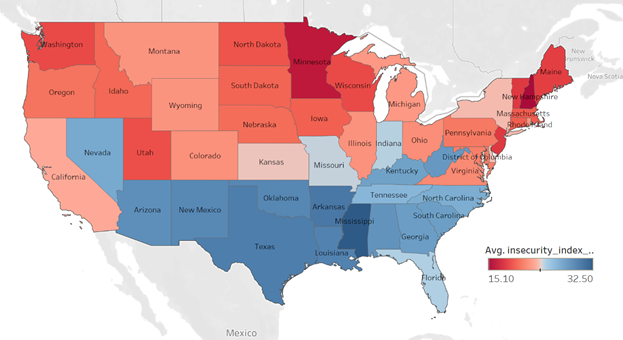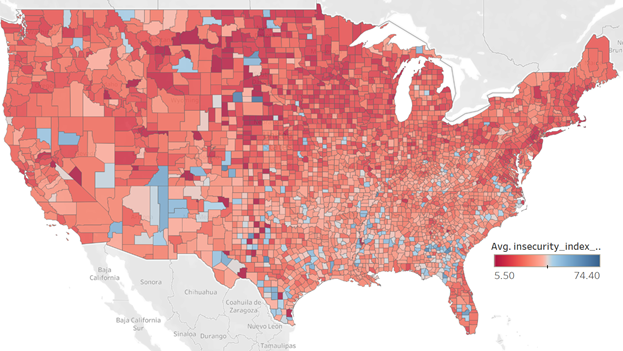The New York Fed has created the Credit Insecurity Index that evaluates credit access and credit health for communities across the US. The purpose of the index is to inform community stakeholders, including community banks, for development policy and practice. Thus, the index can be a useful tool in the Community Reinvestment Act (CRA) reform discussions for more targeted policies (see our related LinkedIn posting).
Credit insecurity of a community is defined as the share of residents in that community that are “credit constrained,” that is, unlikely to obtain credit at choice to manage emergencies, take advantage of opportunities, or invest in one’s future.
Several credit-limiting outcomes are combined into a single score for a community in order to assess credit insecurity or lack of access to credit at choice within that community. The resulting score is therefore different than a typical measure of access to credit such as the percent of residents in a community with a credit file and credit score. The higher the score the more credit insecure the community is.
Figure 1 depicts the score as of 2018Q4 at the State level. The higher the score of a State and hence its credit insecurity the more blue its color is.
- States in the South tend to have higher scores than the ones in the North.

Although the credit insecurity score is not measured in the traditional way of access to credit, it is highly correlated to the average FICO score. Figure 2 shows the average FICO score for 2019 at the State level. It is almost a mirror image of the credit insecurity distribution across States. The lower the FICO score the more red the color of the State is.
- States in the South tend to have lower FICO scores on average than the ones in the North.

Figure 3 depicts the distribution of the credit insecurity score at the county level. The higher the score of a county, the more blue its color is. As with Figure 1, there is higher concentration of red States (lower credit insecurity) in the North than in the South. The lowest credit insecurity score is in Fall Church VA and the highest in Aleutians West AL (not shown on the map).
On February 19 the Office of the Comptroller of the Currency and Federal Deposit Insurance Corp. announced a 30-day extension to the comment period for the CRA proposal, pushing the deadline to April 8.
- Shouldn’t the policymakers consider targeted policies that particularly address this divide in access to credit as part of the CRA reform?


